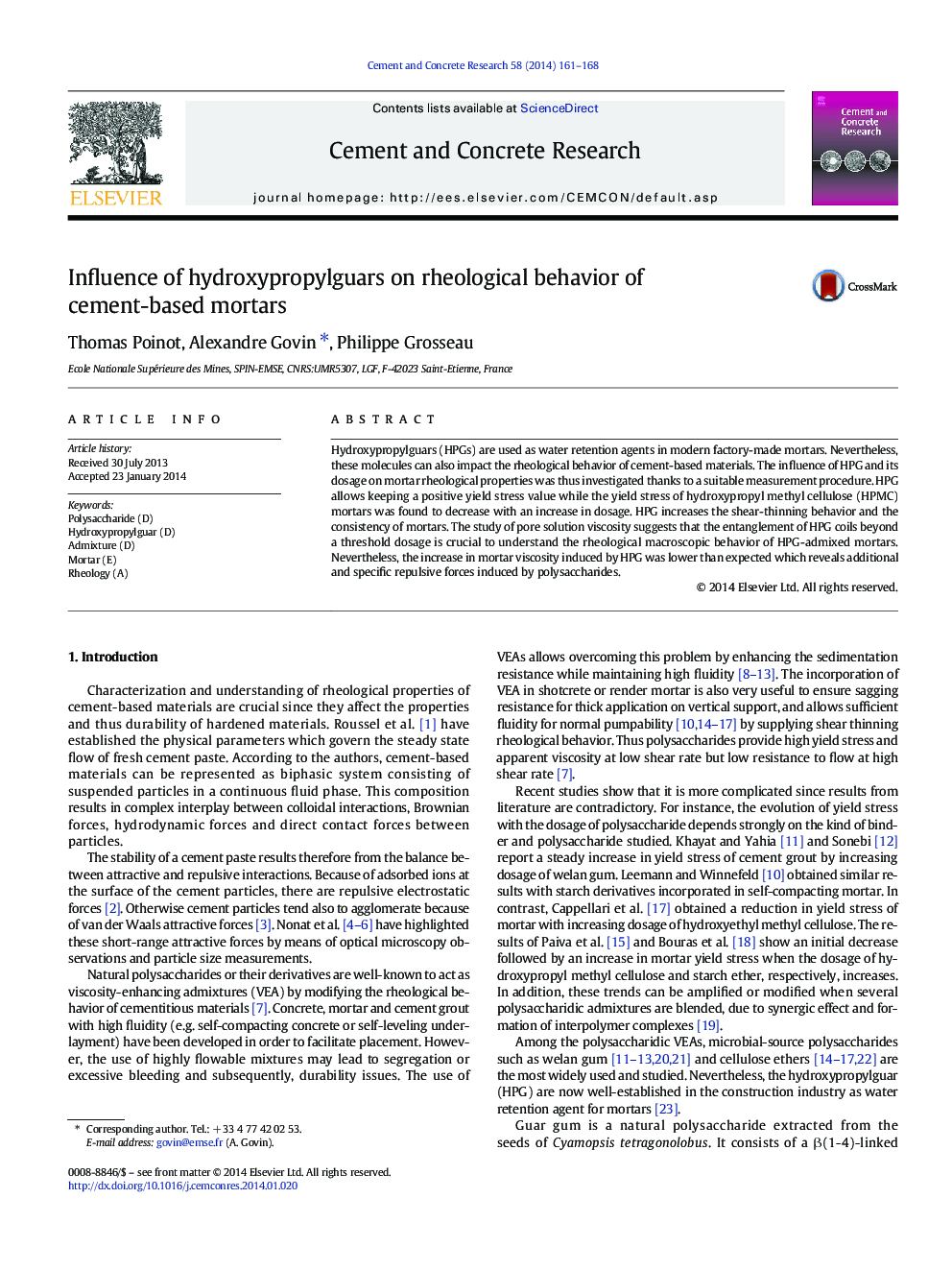| Article ID | Journal | Published Year | Pages | File Type |
|---|---|---|---|---|
| 7885612 | Cement and Concrete Research | 2014 | 8 Pages |
Abstract
Hydroxypropylguars (HPGs) are used as water retention agents in modern factory-made mortars. Nevertheless, these molecules can also impact the rheological behavior of cement-based materials. The influence of HPG and its dosage on mortar rheological properties was thus investigated thanks to a suitable measurement procedure. HPG allows keeping a positive yield stress value while the yield stress of hydroxypropyl methyl cellulose (HPMC) mortars was found to decrease with an increase in dosage. HPG increases the shear-thinning behavior and the consistency of mortars. The study of pore solution viscosity suggests that the entanglement of HPG coils beyond a threshold dosage is crucial to understand the rheological macroscopic behavior of HPG-admixed mortars. Nevertheless, the increase in mortar viscosity induced by HPG was lower than expected which reveals additional and specific repulsive forces induced by polysaccharides.
Keywords
Related Topics
Physical Sciences and Engineering
Engineering
Industrial and Manufacturing Engineering
Authors
Thomas Poinot, Alexandre Govin, Philippe Grosseau,
